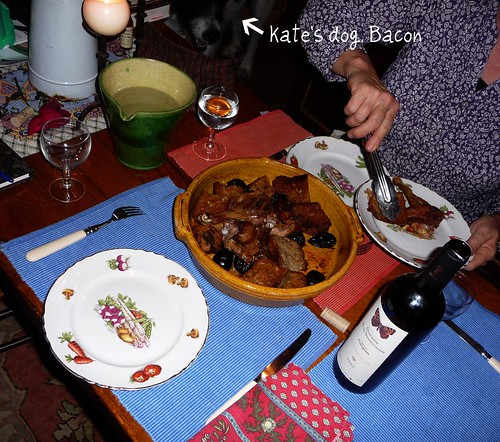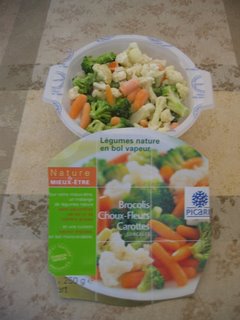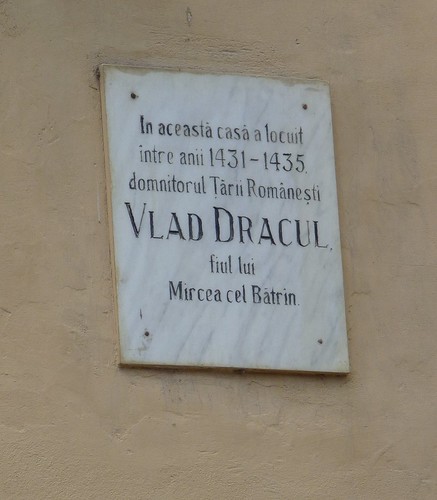Happy, new
Ring the bells
Fruits de saison
 Years ago, every time I went shopping at the "hypermarché," I came home with some kitchen object. Big French supermarkets have increased their offer in that department, too, so I could be even more tempted now -- except that I try to get my husband and kids to do the grocery shopping as much as possible!
Years ago, every time I went shopping at the "hypermarché," I came home with some kitchen object. Big French supermarkets have increased their offer in that department, too, so I could be even more tempted now -- except that I try to get my husband and kids to do the grocery shopping as much as possible!The other day, though, I couldn't resist this "Coupe de fruits carrée." (Yes, this does sound like a contradiction in terms, but that is what it was called.)
We had always piled our fruit onto an over-sized plate, with all of the confusion and lack of breathing space for the fruit that that implies. Now I fill up my little square fruit plate piece by piece, as artistically as possible. When it starts to empty out, I know it's time to buy fruit!
 The whole family has taken to the new object, and I find my daughters rearranging the pieces from time to time to give the platter a new look.
The whole family has taken to the new object, and I find my daughters rearranging the pieces from time to time to give the platter a new look.It's also fairly compact, so it can be placed on our small kitchen table after dinner without any major effort.
Of course I usually have more than nine pieces of fruit on hand, but they wait patiently in the arrière-cuisine until their moment to shine.
Quel bel objet!
CHICKEN BIRYANI RECIPE VIDEO YouTube VIDEOGULP !
[starttext]
CHICKEN BIRYANI RECIPE VIDEO YouTube VIDEOGULP !
GULP - CHICKEN BIRYANI INDIAN RECIPE VIDEO
Selection YouTube video Videogulp !
[endtext]
Vita-Mix Blender Review

I've longed for a Vita-Mix blender ever since I saw them being used on various competitive cooking shows, such as Top Chef and Iron Chef, so I jumped when I was offered the chance to review one. Frankly I was curious to see if I could make velvety soups and sauces like the ones I've had at restaurants but sometimes found difficult to recreate at home. I'm happy to say, the Vita-Mix gave me excellent results. I put it to the test making potato soup, butternut squash soup and mole sauce. I have also made countless smoothies with very good results. You can get creamy textures using a blender but not the super smooth luscious creaminess you will achieve using the Vita-Mix.
At first I thought perhaps the larger size of the jar would make it difficult to blend small quantities but I didn't find that to be true at all. The base of the jar is larger, but the blades are flatter, and don't stick up quite so vertically as they do in a conventional blender. I have had very good results making small batches of things like pesto, peanut butter and even whipped cream. In addition to peanut butter, whipped cream and butter you can also make all kinds of tapenades and pastes in the Vita-Mix.
Because the blades heat up after a few minutes, you can also make things like ready-to-eat soups and sauces in the Vita-Mix, if you like. Personally I still prefer to cook using the stove, but it is a fun thing to try and could come in handy now and then.
Do I love the Vita-Mix blender? Yes! Do I use regularly? Yes, I do! Is it better than my old Osterizer blender? Yes! There is no comparison.
Strengths
Power--First and foremost this is an incredibly powerful machine that doesn't just puree but actually pulverizes. The speed tops out at 240 mph. Little seeds in fruit are blasted into practically dust. No more gritty strawberry smoothies!
Light jar--The BPA-free plastic jar is large yet easy to lift because it is not made of glass. The jar is also is very easy to wash and keep clean.
Size--It's taller but not that much wider than a regular blender. l leave mine out on the counter.
Tamper--The Vita-Mix comes with a tamper to help push stuff down in the jar while you are blending. I hate stopping and scraping and with the Vita-Mix you stop and scrape a lot less.
Design--The sleek design and lack of buttons makes it easy to clean.
Texture--You can get great thick textures from this machine. The included recipes for "ice cream" are really combinations of frozen fruit and milk, but they blend to a very dense consistency when you blend them in the Vita-Mix.
Smoothies--Not only can you make fruit smoothies but you can also make vegetable or green smoothies. Also when you add ice to a regular blender you get a chunky texture, not so with the Vita-Mix. Crushed ice becomes very fine and silky.
Raw--Want to try making raw recipes like vegetable hummus, raw nut cheeses, creams and milk? The Vita-Mix allows you to get the texture you'll want for these types of recipes.
Quiet--You might think it would be noisy, but it's surprisingly quiet.
Weaknesses
Grinding--The 5200 model is not intended be used for grinding grains. There is a separate container and blades for this, but wouldn't it be great if you could do it all in one? If you do try grinding grains you are warned that you may mar the appearance of the jar.
One appliance that replaces many--After using the Vita-Mix for a couple of months, I have to say, it doesn't take the place of my Cuisinart food processor. I prefer the food processor for shredding, and for making pie crust and pasta dough. It does chop vegetables more evenly than the food processor, but I generally don't use either appliance for that task.
Ice cream--Countless videos and recipes say you can make ice cream with the Vita-Mix. You cannot. You can make a very thick and creamy dessert with fruit, milk and ice. But really, that is not the same as ice cream!
Cookbook--The cookbook that comes with the Vita-Mix is fine for learning the basics, but it's not very inspirational. I recommend checking out recipes from professional chefs and bartenders.
Cost--I love high quality appliances, but they do come with a hefty price tag. Is it worth $449? That's a tough call, however it does come with a full 7-year warranty and you can return it within 30 days for a full refund if you decide you don't want it. I think those who will get the most use out of the Vita-Mix are people who either make a lot of smoothies or are interested in experimenting with raw food.
Note: I was sent the Vita-Mix 5200 to review by the manufacturer
Mushroom Moussaka


 This should be a dish you make when you have a lot of free time, to keep in the fridge (for up to a week) when you want something soul satisfying.
This should be a dish you make when you have a lot of free time, to keep in the fridge (for up to a week) when you want something soul satisfying.Although it's time consuming, you will not regret making it. The focus of this blog is clearly to write recipes for one person (without leftovers), but I really wanted to include this because it's so delicious and absolutely worth making; additionally, moussaka keeps very well in the fridge for up to a week, and the flavors blend actually become better as time goes on. The eggplants bake twice, which removes a lot of their moisture and leaves them soft, fluffy, and so easy to break through with a fork.
Mushroom Moussaka - makes 4 servings
2 large eggplants, washed and cut cross-wise into 1/4-inch rounds
1 lb of mushrooms
3 onions, coarsely chopped
2 garlic cloves, chopped
7 oz. tomato sauce
3 oz. tomato paste
1/2 tsp. cinnamon
salt
black pepper
1/2 tsp. thyme, chopped
1/2 tsp. basil, chopped
1/2 cup fresh minced parsley
1/2 tsp. ground cloves
1/2 cup grated parmesan cheese, divided in two equal portions
1/4 cup bread crumbs
2 tbsp. butter
3 tbsp. flour
1 1/4 cup hot milk
nutmeg for grating on top
1. To get started with, sprinkle the eggplants with salt, and layer them gently on a colander over a sink. Let stand for 20 to 30 minutes (this will allow the eggplant to release a lot of its liquid, so that it doesn't become soggy and heavy when baked).
2. In the meantime, you can work on the mushroom sauce/filling. Heat 1 tablespoon olive oil in a large skillet over medium heat, and add the onions and 1 teaspoon salt, stirring until onions become clear, 8 to 10 minutes. Add the mushrooms and garlic, stir to combine, and cover, cooking for another 8 to 10 minutes.
3. Next add the tomato sauce, tomato paste, cinnamon (you can add more than 1/2 tsp. if you're a big fan), a couple sprinkles of pepper, and your chopped thyme and basil. Bring to a boil, then lower the heat and simmer, uncovered, for another 12 to 15 minutes. This is my favorite part of the recipe, because you get to taste it a bunch and tweak the seasoning!
4. Remove from the heat, and stir in the parsley, the bread crumbs, and 1/4-cup of grated parmesan cheese.
5. At this point, you'll want to work on your eggplants. Preheat your oven to 375 degrees, and line a 9 x9 -inch pan with a baking sheet or tin foil. Lightly oil the sheet, and then place your eggplants on it (they will overlap, which is fine). Bake the eggplants until tender, about 20-25 minutes.
6. To make the bechamel sauce, melt the butter in a small saucepan over medium heat. Whisk in 2 tablespoons of the flour. Cook for several minutes, whisking the whole time.
7. Slowly pour in the hot milk, whisking constantly. Your arm might get tired, but you're almost done! Turn the heat down to low and stir for another 5 to 8 minutes, until the sauce is smooth and thick. Whisk in 1 more tablespoon of flour, and cook for another 5 to 8 minutes, stirring occasionally. Next whisk in the remaining grated parmesan and the ground cloves, and stir until just combined. Remove from heat.
8. If your oven is still on, great; if not, preheat it to 375 degrees fahrenheit. Using a 9 x 9-inch baking pan, oil a baking sheet and place it in the pan. Place a double layer of eggplant slices on the bottom, and spread all the mushroom sauce over it. Lay 1 more layer of eggplant over the sauce, then spread the bechamel on top. Sprinkle some more bread crumbs and parmesan to cover most of the bechamel, and bake uncovered for 25- 30 minutes, or until golden on the top.
Merci beaucoup, a demain mes puces!
Thanksgiving in Gascony
No turkey. No cranberry sauce. No green bean casserole (for that I am thankful!) No pumpkin pie.
For our Thanksgiving in Gascony, Kate, Carol and I spent the morning at the market in Éauze, spent the afternoon tasting Armagnac and after un p'tit apéro when we got home, whipped up a simple, yet festive meal of Chestnut Soup, Duck Legs with Prunes, cheese from the Pyrénées and Fromageon Gascon spread on toasted fig bread.
What a perfect day.



Fromageon Gascon
- 250 grams/8 ounces chèvre frais or faisselle
- 1 tablespoon honey
- 1 tablespoon Armagnac
Drizzle extra honey on top if you like it a bit sweeter
.
Crispy Panko Mustard Chicken: Recipe

Do you know panko? It's a Japanese style of bread crumbs used to coat fried food. The crumbs are large and very flaky. It's made from yeast-raised bread dough that is baked in a special oven so it does not form a crust. The crumbs start out very pale colored but cook up golden brown. You can find it in the Asian section of just about any supermarket.
Traditional Japanese recipes using panko include Tonkatsu, a breaded fried pork cutlet. It is delicious, like most fried food, but not very healthy. I knew there had to be a way to use panko to make an oven-fried crispy chicken breast or cutlet. But I will admit, it took several attempts to get this one right. It really satisfies that craving for crispy fried food but is practically guilt-free. I used the Creole Mustard from Dulcet Cuisine which has a stone-ground texture and is flavored with onion, garlic, paprika, pepper and thyme. So I guess this is kind of a Southern/Japanese fusion entree.
The trick to this technique is to mix the panko crumbs with just a little bit of melted butter then put it on top of the mustard coated chicken by hand instead of dipping the chicken in the crumbs. You can use any kind of mustard you like, but the Creole Mustard is really terrific with this recipe. I recommend letting the chicken cool a little and serving it in slices with roast potatoes, carrots and brussels sprouts.
Crispy Panko Mustard Chicken
serves 2
1 Tablespoon unsalted butter
1 Tablespoon Creole Mustard
1/4 cup panko
2 skinless, boneless chicken breasts
Preheat oven to 475 degrees. Melt the butter in a small dish in a microwave oven then combine the butter with the panko crumbs in a small mixing bowl.
Coat chicken breasts with mustard then place on a greased, foil-lined baking sheet, top with crumbs and bake approximately 15 minutes or until cooked through and golden brown.
Enjoy!
This is NOT a Gourmet Blog!

One of my friends, who writes a sporadic but fun recipe blog in French, told me yesterday that my blog was more of a "gourmet" blog, whereas hers was just about "cuisine quotidienne," or everyday cooking.
Rats! Maybe I have missed my point; maybe I have occasionally been a blog god wannabe. But my goals for Cuisine Quotidienne haven't changed since the blog's creation :
" If your idea of French food is Michelin rated restaurants and the great classics, don't read this blog. If you want to know what working people outside of big cities are really cooking and eating, you might enjoy a read here from time to time." (December 23, 2005)
So, I try to write about how I really cook, keeping in mind that I also work and have a family. I also write about what I see around me -- the occasional trend or observation of what other families do.
Just to prove that this is NOT a gourmet blog, I freely admit that from time to time frozen food from Picard works its way into my cooking -- a point that greatly annoyed another French friend -- who doesn't read English, so maybe he missed a few nuances.
"I looked at your blog, and what did I see -- Picard!" Yes, friend who will remain anonymous -- but who do I see when I go to those temples of gourmet frozen food? A heck of a lot of French people!
Tinga de Pollo y Papas
Last week I had my first chance to watch a few episodes of Mexico-One Plate at a Time on a DVD that a friend lent me and discovered that, although you're a seriously talented and passionate chef, on your show, when you're not cooking, you're kind of awkward and well...dorky.
But who cares!
Your recipes are brilliant and I've loved every single one that I've ever attempted.
Especially, as I like to call them, the knock-you-on-your-ass Margarita recipe that you so innocently call the Top of the Line Margarita. The night I made a pitcher for myself and three of my friends was the infamous evening that will forever be known as "the night we danced with the chihuahua and danced on the dining room chairs until one of us fell off."
It's an excellent recipe. Go ahead, try it. You'll see.
Then, if you remember anything the next day, let me know what you thought.
Mr Bayless, you've done more for my appreciation of the complexity and uniqueness of Mexican cuisine than a hundred trips to Mexico could have done. And I thank you for that.
So, you're kind of a nebbish. So what.
I find it endearing.

The following is taken from Rick Bayless's Mexican Kitchen
Smoky Shredded Chicken and Potatoes with Roasted Tomatoes
Tinga de Pollo y Papas
serves 4 as a light main dish (with about 4 cups of finished tinga)
INGREDIENTS:
- 4 medium (1 ½ pounds total) chicken thighs, skin removed
- 4 medium boiling potatoes (like the red-skin ones)
- 1 medium white onion, thinly sliced
- 1 teaspoon dried oregano, preferably Mexican
- Salt, about ¾ teaspoon
- 1/3 cup crumbled Mexican queso fresco or pressed, salted farmer's cheese
- 1 ripe avocado, peeled, pitted and cut into 3/8-inch dice
- 1 recipe Essential Quick-Cooked Tomato Chipotle Sauce (recipe below)
DIRECTIONS:
- The chicken and potatoes -- Nestle the skinless thighs into the sauce, cover, and set over medium-low heat. Cook for about 25 minutes, until the meat is thoroughly tender. Remove the chicken to a plate, leaving as much sauce as possible in the pan. Cool, then pull the meat from the bones in large shreds; there will be about 2 cups.
- With a food processor or hand grater, coarsely shred the potatoes. Squeeze between your hands to remove as much water as possible.
- Finishing the dish -- Heat the remaining I tablespoon of the oil over medium-high in a large (10- to 12-inch) nonstick or well-seasoned skillet. Add the onion and potatoes and cook, stirring and scraping up any sticking bits, until well browned, about 15 minutes. Scrape in the sauce and oregano, bring to a boil, stir in the chicken, and heat through, about 2 minutes.
- Taste and season with salt.
- Scoop the mixture into a warm, deep, decorative serving dish. Sprinkle with cheese, strew with avocado and serve without hesitation.
Advance Preparation: The tinga can be finished a day ahead, cover and refrigerate. Warm in a 400-degree oven, covered with foil, garnish with avocado and cheese, and serve.
Shortcuts: A drained 15-ounce can of tomatoes can replace the roasted fresh ones.
makes 1 cup
INGREDIENTS:
- 2 stemmed, dried chipotle chiles or canned chipotle chiles en adobo
- 2 garlic cloves, unpeeled
- 12 ounces (2 medium-small round or 4 to 6 plum) ripe tomatoes
- 2 tablespoons olive or vegetable oil
DIRECTIONS:
- For dried chiles, toast them on an ungreased griddle or heavy skillet over medium heat, turning regularly and pressing flat with a spatula until very aromatic, 30 seconds. In a small bowl, cover the chiles with hot water and let rehydrate 30 minutes, stirring frequently to ensure even soaking. Drain and discard the water. (Canned chiles need only be removed from their sauce.)
- While the chiles are soaking, roast the unpeeled garlic on the griddle or skillet over medium heat, turning occasionally, until soft (they will blacken in spots), about 15 minutes; cool and peel. Roast the tomatoes on a baking sheet 4 inches below a very hot broiler until blackened on one side, about 6 minutes, then flip and roast the other side. Cool, then peel, collecting all the juices with the tomatoes.
- In a food processor or blender, puree the tomatoes and their juices, rehydrated or canned chiles and garlic to a medium-fine puree. Heat I tablespoon of the oil in a heavy, medium (2- to 3-quart) saucepan over medium-high.
- Add the puree and stir for about 5 minutes as it sears and thickens.
House For Sale
 front of the house
front of the houseWe've decided to put our house on the market. Actually, it's been on the market since early last summer, but this has been a very quiet year, real estate wise. We would prefer to sell the house ourselves, since agent's fees in France are around a whopping 10%!
So, here's our house. Now, who wants to buy it?
 kitchen
kitchen kitchen and corner of living room - cat not included
kitchen and corner of living room - cat not included top floor
top floor top floor, beams and skylight
top floor, beams and skylight shower
showerOn the main floor the house offers an open plan living room with a working fireplace, dining area and full kitchen with plenty of storage space. All appliances are only 3 years old.
On the first floor there is a landing, big closet, new, big, bright shower room and a large bedroom with built in storage cupboard.
The grenier has been renovated into a large room with visible beams, Velux window and two large closets. It is currently used as an office and spare bedroom. There is possibility of creating a roof terrace.
All of the windows are double glazed and have screens.
Some of the furniture may be included in the sale.
There is a private, 200 square meter, detached garden just one minute walk away from the house with an olive tree, plum tree, fig tree, apricot tree and table grape vines. It is secured with a door that locks and has power and a well.
The street is very quiet and the house is on the edge of the village. Walks into the vineyards and the hills are just around the corner.
The village has a small grocery store run by a very friendly woman where bread is delivered every morning. A library, a post office and a wonderful café/bistro, open all year, make it a perfect place to live or enjoy a holiday.
There is a lake 10 minutes away and 5 minutes up into the hills brings you to the stunning, medieval Cathar town of Minerve. Olonzac, which has a vibrant market every Tuesday morning, is just a few minutes away and the Canal du Midi is 10 minutes away. Carcassonne is a 35 minute drive and Narbonne is a 30 minute drive. Mediterranean beaches are only 40 minutes from the house and Spain is only 70 minute drive south.
If you like to play golf, there is a golf resort development underway within 10 minutes of the property, which will include a championship 18-hole course with club-house amenities.
It is a beautiful, ideal place to live year round or an easy holiday home which you can lock up and leave.
All this for only 115,000€!
And no, we're not leaving France!
Photo du Jour
United States of Arugula Contest

The United States of Arugula is truly a great read. The subtitle on the hardcover was "how we became a gourmet nation" but on the newly released paperback it is "the sun-dried, cold-pressed, dark-roasted, extra virgin story of the American food revolution." If you ever wondered how we became a nation obsessed with food, author David Kamp investigates and the results are fascinating.
I enjoyed reading about the early days of pioneers such as Alice Waters, James Beard, Julia Child, Emeril Lagasse and Thomas Keller, to name but a few. The book is filled with so much history, politics, and juicy gossip that I simply couldn't put it down. Kamp even touches on current hot buttons like "sustainability", Whole Foods Market, and Fast Food Nation. Best of all, the book left me feeling optimistic about where we are heading when it comes to food.
If you haven't read The United States of Arugula yet, this may be your lucky day. Courtesy of Broadway Books, I have 10 paperback copies to give away to the first 10 people who correctly answer the trivia questions below. You must be a US resident to win since I'm paying for shipping. Simply leave your answers in the comments section below and be sure to include your email address so I can contact you if you win. Only one entry per person, so choose carefully! Remember, you MUST include your email to win and your mailing address must be in the United States. Good luck!
CONTEST HAS ENDED--NO MORE ENTRIES ACCEPTED
Note: Gather readers must go to www.cookingwithamy.com if they wish to enter, comments left at Gather will NOT be eligible to win.
1. The characteristic orange-pink color of salmon is due to a chemical relative of the carotene pigment that colors carrots
True or False
2. The olive tree was most likely cultivated
a) 5,000 years ago
b) 2,000 years ago
c) 1,000 years ago
3. Sake is best drunk
a) As young as possible
b) When aged
4. Surimi in Japanese means
a) Fake fish
b) Fishcake
c) Minced fish
5. Bean curd was invented in Japan
True or False
6. The word sausage comes from the Latin word
a) Cure
b) Salt
c) Stuff
7. Eggs are what percent of a hen's weight?
a) 5%
b) 3%
c) 1%
8. Which is richer?
a) Pound cake
b) Butter cake
FOOD
Candied Grapefruit Peel, Dried or in Syrup






Happy Thanksgiving!
But if you're interested, you can find my Thanksgiving post here.
Rillettes country


A taste of France: visiting a local market.
 When I visited Normandy last summer, I was very pleased to see at the museum of the Tapestry of Bayeux, circa 1066, a reconstitution of a market scene of that time. It was lively and colorful!
When I visited Normandy last summer, I was very pleased to see at the museum of the Tapestry of Bayeux, circa 1066, a reconstitution of a market scene of that time. It was lively and colorful!Note that if you rare curious and read my post about Bayeux , you will see a delightful top picture of the town at sunrise that Fifi Flowers later painted - and I could not resit buying it once I saw it. It is being framed by Marie K Verbois and I will show you the result once it is done!
French markets are older than that! In the 5C Paris, called then Lutece, had an open market in the Ile de la Cite, the island where Notre Dame is. Later in the 16 C, Paris has already four bread markets and one animal market.
 Today there are 78 food markets markets in Paris, some are in the open air, or as they were called in the old times, market in the wind (marche au vent), and some are covered. The open air markets are set at around 8 am and pack back between Noon and 1 pm, a bit later on weekends. Sellers are proud of their products, like this "charcutiere" cutting thin slices of her home made ham.
Today there are 78 food markets markets in Paris, some are in the open air, or as they were called in the old times, market in the wind (marche au vent), and some are covered. The open air markets are set at around 8 am and pack back between Noon and 1 pm, a bit later on weekends. Sellers are proud of their products, like this "charcutiere" cutting thin slices of her home made ham.
 There over 36000 markets of all sorts in France, some are food markets, like this one in Marmande, in the Southwest:
There over 36000 markets of all sorts in France, some are food markets, like this one in Marmande, in the Southwest:  or this brocante near Bordeaux where old linen is sold:
or this brocante near Bordeaux where old linen is sold:  or this animal market in the Sarthe, region west of Paris (Capital Le Mans, where the 24 hours of racing are held every year)
or this animal market in the Sarthe, region west of Paris (Capital Le Mans, where the 24 hours of racing are held every year)  When you visit France, you will find that is right for you.
When you visit France, you will find that is right for you.Very well then
Mousse au Chocolate

My first job outside of babysitting was working for my dad. He created a special position just for me, where he set me up in one of the spare rooms at his office and stacked loads of letters on one side and loads of envelopes on the other. Envelope stuffing. Looking back, it was a pretty good incentive to stay in school and do my best. I did not want a life-time of stuffing envelopes in my future. The perk was always lunch, I usually got to choose, and at one particular favorite, something of a Denver institution actually, Le Central, I had my first mousse au chocolate. The Le Central version was studded with toasted hazelnuts, and perhaps they used some kind of hazelnut liquor (like Frangelico?) in place of the whiskey in the recipe below. Come to think of it, that's not such a bad idea (keep in mind for next time).

Mousse au chocolate is no pudding. It's lighter in texture but more decadent. And R has been whining about getting some for a long, long time. In fact, you remember that wonderful chocolate tart from a couple of weeks ago? That was a compromise. Because he could have done without the crust and just dug into a big pot of filling. And it's really not hard to put together. I mean, yes, there's a fair amount of whipping, but not having to make a crust does save time. And mousse au chocolate is best made ahead of time, anyway, because it needs a few hours in the fridge to set up. Making it ideal for having people over. So we did.

Mousse au Chocolate
From Cook's Illustrated via Orangette
8 oz. bittersweet chocolate (60% cacoa is recommended and Ghirardelli is a good bet) finely chopped
2 Tbsp. Dutch-processed cocoa powder (Make sure it's Dutch-processed, not natural.)
1 teaspoon instant espresso powder
5 tablespoons water
1 tablespoon whiskey, brandy, or even Frangelico (I'm going to try Frangelico next)
2 large eggs, separated
1 tablspoons sugar, divided
1/8 teaspoon salt
1 cup plus 2 tablespoons cold heavy cream
Lightly sweetened whipped cream for serving
In a heatproof bowl that you can set over a double boiler, combine the chocolate, cocoa powder, espresso powder, water and liquor. Place the bowl over a saucepan of about an inch of gently simmering water. Stir to combine the ingredients, until the mixture is smooth, then remove from the heat.
In a second medium bowl, combine the egg yolks, 1 1/2 teaspoons of the sugar and the salt. Beat until the mixture turns a pale yellow and begins to thicken, about 30 seconds. Pour the melted chocolate mixture into the egg mixture and whisk together until combined. Set aside for 5 minutes, until it's just warmer than room temperature.
In the meantime, using either a standing mixer with the whisk attachment or a hand-held, in a very clean bowl, beat the egg whites on medium-low speed until they froth. Add the remaining 1 1/2 teaspoons sugar, then increase the spead of the mixer to medium-high and beat until the soft-peak stage. Using a rubber spatual, fold about 1/4 of the egg whites into the chocoalte misture. Then fold in the rest until only a few white streaks remain.
You can use the same mixer bowl for the next step. Whip the heavy cream at medium spped until it starts to thicken, then increase the speed to high. Whip until soft peaks form and it looks like, well, whipped cream. Using the same rubber spatula, fold all of the whipped cream into the mousse until completely combined. Spoon into individual serving dishes, top with extra whipped dream, cover with plastic wrap and refrigerate for at least 2 hours and up to an entire day.
Jarret d'Agneau (Braised Lamb Shanks)
I knew I wanted the main dish to feature a slow-cooked meat, and after some research I had settled on lamb shanks, which, when cooked properly, fall off the bone with just a nudge from the fork, and present a silky, tender, and rich sensation to the palate. Braising lamb shanks in red wine seemed like a luxurious and satisfying option, and one which I hoped would appeal to my gastronomically-inclined guest.
After about 2 1/2 hours in the oven, I pulled out the cast-iron pot and placed it on the stove. My dad and I anxiously peered over the dish, nervous and excited to discover what results had ensued. The shanks looked nicely browned and golden on the outside, the aroma was intoxicating, but were they fall-off-the-bone tender? With a gentle push from a fork, we learned that the meat was willing to dive off the bone with no effort at all. Phew!
What ensued I can only describe as joy. This dish confirmed to me once again that the benefits of eating good food are multiple and important. Good conversation, satisfied taste buds, and a shared love of what we were putting in our bodies created a sense of peace and satisfaction that left us all in an elated state.
Served alongside broiled asparagus with a balsamic glaze and shaved parmesan, we were wholly satisfied with the meal. The recipe here is designed for one person - if you have a couple of hours to spare, I hope you try it!
Jarret d'Agneau - serves 1
Scant tablespoon extra-virgin olive oil
1 lamb shank (about 1 pound), trimmed of excess fat, and rubbed with salt and pepper
1 medium onion, sliced thin
1 medium carrot, cut cross-wise into large (2-inch) pieces
1 garlic clove, sliced
1 tsp tomato paste
1 tsp freshly chopped rosemary
1 tsp freshly chopped thyme
1/2-cup dry red wine, such as cabernet sauvignon
3/4 - cups low-sodium chicken broth
Preheat the oven to 350 degrees.
1. Heat the olive oil in a 3 or 4-quart dutch oven or cast-iron pot over medium-high heat. Once the oil is shimmering, swirl it around to coat the bottom of the pot. Add two of the shanks, and cook until browned on the outside, about 7 minutes, turning once halfway through. Place shanks on a plate and repeat with remaining two lamb shanks; set aside on plate.
2. If there is more than 2 tablespoons of fat on the top, remove the excess. Place the onions, carrots, herbs, and tomato paste in the pot, and cook, sitrring occasionally, until vegetables are slightly softened, about 4 minutes.
3. Reduce the heat to medium; add the wine, then the chicken stock, and bring to a simmer. Add the lamb shank, sprinkle with salt and pepper, cover, and braise in the oven for 1 1/2 hours.
4. Remove the lid, and continue to braise for 1/2 hour longer. Take the pot out of the oven, and turn over the shanks to brown the other side. Continue braising until the shanks are extremely tender (and fall off the bone easily), about 20-30 minutes longer.
5. Remove from oven and let cool for about 15 minutes. Skim off any excess fat that has risen to the surface, place the pot on the table, and dig in!
1550 Hyde:Restaurant Review

What makes a neighborhood place a neighborhood place? My neighborhood has a lot of good and even some great restaurants but 1550 Hyde is a classic neighborhood place. Here's why I think it qualifies. It's cozy and warm and the staff greets you as if you are a local even if you're not. It's very small so service is good even when the place is packed. Perhaps most key, it's within walking distance of my house. On Russian Hill finding a parking spot can be a nightmare, but 1550 Hyde is on the cable car line making it a good pick for those looking for a place where the locals go.
I can't remember all the names of the restaurants that have once been at the 1550 address, let alone how many I've tried. Thankfully the current incarnation is a real winner. It's yet another restaurant I've been meaning to try that I chose this past week based on it's participation in Dine About Town. The menu had so many tempting choices I ended up ordering a couple of things a la carte instead of prix fixe. Good thing too because the portions were enormous.
To start Lee had a split pea soup with ham that was smoky and thick, just the thing on a chilly night. I had the rabbit liver and hazelnut terrine ($8) which was as decadent as it sounds. It came with a crisp and refreshing pea shoot and pear salad. For a main dish I can never manage to pass up rabbit. It's not something you find in the supermarket so I have never even attempted to make it. Famous for it's reproductive proclivity, rabbit is considered a more "sustainable" food. Personally I just like the way it tastes braised. This version came with some aromatic vegetables--kale and carrots and a rich reduction of pan liquid and a most unusual polenta. The polenta was slightly fluffy and speckled with rosemary. It had a rustic feel to it and was a perfect compliment to the rabbit. I literally could not finish the portion which is a rarity for me.
Lee had the chicken "under a brick" ($18) that 1550 Hyde is known for. It came with a most creamy almost nutty potato parsnip puree that was to die for. It also came with lemony sauteed broccoli. Let me just take this opportunity to say that I support restaurants that serve entrees with vegetables instead of charging you extra should you decide you want one. Making a chicken juicy on the inside and crispy on the outside is the goal of chicken under a brick, and they succeeded.
For dessert we had a Chantenais carrot and pine nut cake with cream cheese frosting ($6.50). What makes it Chantenais I cannot say, but it was served warm and dripping with a super rich and creamy frosting that could win over even those who hate frosting. It was a huge portion, though reasonably priced, which when it comes to warm carrot cake, is a very good thing.
1550 Hyde Cafe & Wine Bar
1550 Hyde St. @ Pacific
Open Sunday 5:30-9:30
Tuesday - Thursday 6-10pm
Friday & Saturday 6-10:30 pm
415.775.1550
A Tour Through Transylvania
 Peles Castle
Peles Castle Peles Castle Gardens
Peles Castle Gardens Colorful Sibiu
Colorful Sibiu Carpathian Mountains
Carpathian MountainsTransylvania fully restored my faith in Romania.
After one day in Bucharest it was seriously waning, and I would have been happy to stay comfortably ensconced in our hotel for the remainder of our trip.
Our original plan was to arrange an overnight trip into the wilds of Transylvania once we arrived in Bucharest, so with the help of our hotel's concierge, we happily drove out of the city a day later with our guide, Nic and driver, Igor (no, that wasn't his real name but since he said his real name was impossible to pronounce, he suggested that we call him Elgor, which jokingly became Igor - he cracked up every time we said it).
Before I go any further, I have to mention the obvious; What is the first thing that you think of when you hear the word Transylvania?
Surprisingly, the focus on Dracula wasn't as overwhelming as I thought it would be. Especially after living in the French Quarter of New Orleans and seeing all of the goth/Ann Rice fans/vampire wannabees taking Vampire Tours through the Quarter and the Garden District.
The tour groups that we encountered in Transylvania appeared to focus more on the historical figure of Vlad Tepes, not the fictional figure of Bram Stoker.

Though if you wanted them, there were some Dracula souvenirs to take home.

 Bran Castle
Bran Castle Bran Castle
Bran Castle Sighişoara
Sighişoara Braşov Central Square
Braşov Central Square Sibiu Skyline
Sibiu Skyline Various modes of transportation
Various modes of transportationThe two day tour was action packed.
We visited beautiful Braşov, toured the very ornate and breathtaking Peles Castle and the smaller, charming Bran Castle, spent the night and morning in the stunning UNESCO World Heritage medieval city of Sighişoara and spent an afternoon in colorful and friendly Sibiu, the 2007 European Capital of Culture.
By the time we returned to our hotel in Bucharest, we were churched and castled and medievaled out. We'd climbed to the top of not one, not two, but three very tall church towers and had aching thighs. We'd spent a late night out in a happening little night club in the center Sighişoara's old town. We'd covered hundreds of kilometers and learned volumes of history. We were exhausted.
And it was worth every minute.

